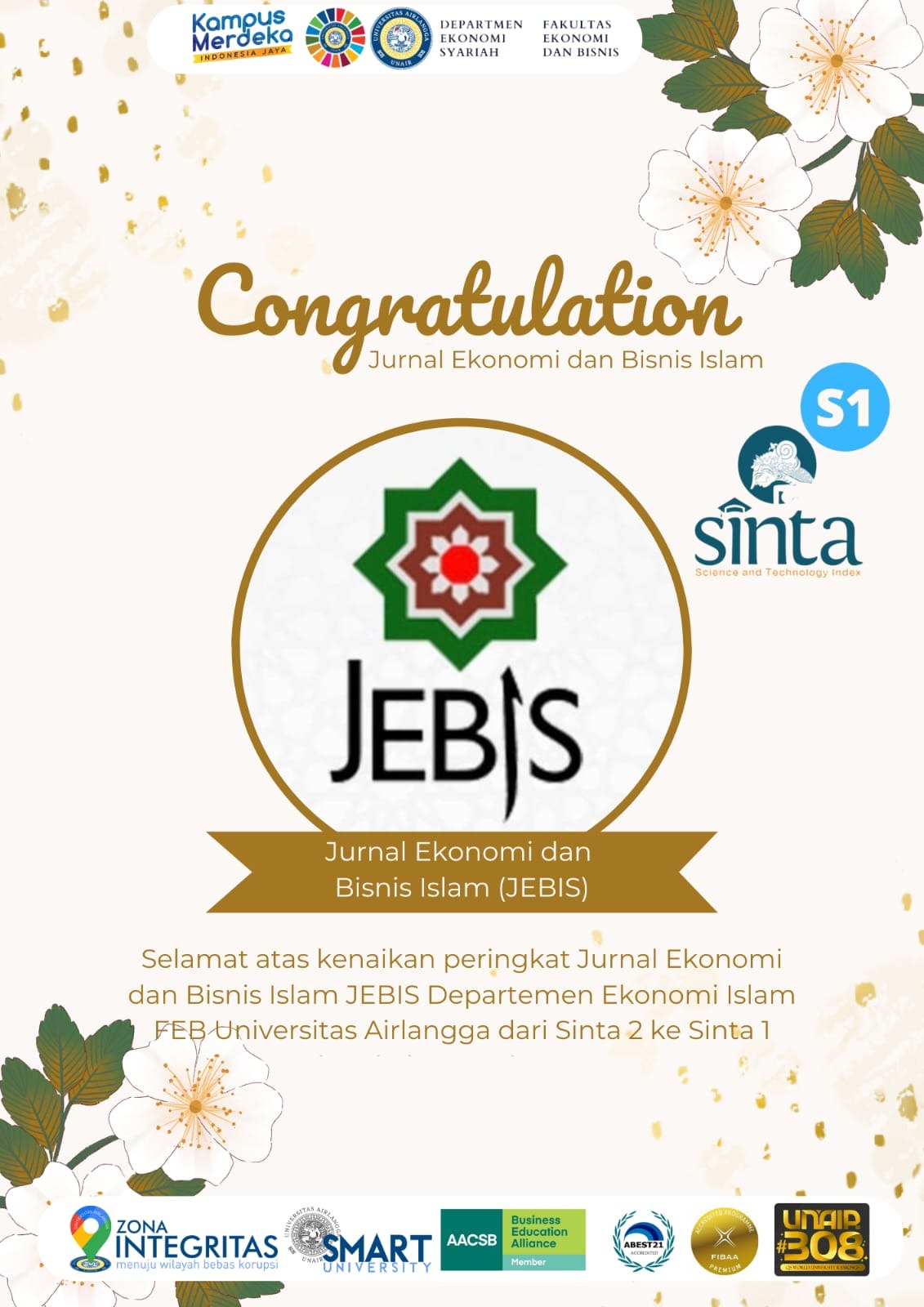HALAL VALUE CHAIN: A BIBLIOMETRIC ANALYSIS
Downloads
Introduction: Despite growing interest in halal research, there is a lack of complete understanding regarding the strategic contribution of the halal value chain to business performance and operations. Issues such as fragmented regulations and limited standardization beyond the food sector exacerbate this. This study aims to systematically analyze the evolution of halal value chain topics within academic discourse, identifying trends, evaluating the impact of research, recognizing key contributors, and suggesting directions for future research.
Methods: This study adopts a bibliometric analysis methodology. The study analyzed 233 Scopus and 116 Web of Science-indexed research publications. The export data is then processed and analyzed using R-studio software to determine the bibliometric map of the halal value chain.
Results: The findings demonstrate a significant increase in halal value chain research since 2011, with a primary concentration in Southeast Asia and a focus on micro, small, and medium-sized enterprises (MSMEs) and the halal food industry. Researchers have identified the gaps in non-food halal sectors, including cosmetics, pharmaceuticals, finance, and tourism. The analysis also highlights three strategic clusters—governance and certification, technological and operational integration, and market-oriented strategies—each contributing to economic, operational, and ethical outcomes.
Conclusion and Suggestion: This study reveals that adopting a value chain perspective in halal supply chain management necessitates a comprehensive and integrated strategy. Future research should focus on empirical studies, sectoral diversification, and innovation in digital halal assurance to enhance the sustainability of the global halal ecosystem.
Ali, M. H., & Suleiman, N. (2018). Eleven shades of food integrity: A halal supply chain perspective. Trends in Food Science & Technology, 71, 216–224.
Ali, M. H., Tan, K. H., & Ismail, M. D. (2017). A supply chain integrity framework for halal food. British Food Journal, 119(1), 20–38. https://doi.org/10.1108/BFJ-07-2016-0345
Antonio, M. S., Rusydiana, A., Laila, N., Hidayat, Y. R., & Marlina, L. (2020). Halal value chain: A bibliometric review using R. Library Philosophy and Practice (e-journal).
Aria, M., & Cuccurullo, C. (2017). Bibliometrics: An R-tool for comprehensive science mapping analysis. Journal of Informetric, 11(4), 959–975.
Azmi, F., Musa, H., Chew, B., & Jagiripu, I. (2021). Supply risk management: A case study of halal food industry in Malaysia. Uncertain Supply Chain Management, 9(2), 501–512.
Chen, C. (2003). Mapping the mind. In Mapping scientific frontiers: The quest for knowledge visualization (pp. 67–99). Springer. https://doi.org/10.1007/978-1-4471-0051-5_3
Chowdhury, P. R., Medhi, H., Bhattacharyya, K. G., & Hussain, C. M. (2023). Severe deterioration in food-energy-ecosystem nexus due to ongoing Russia-Ukraine war: A critical review. Science of the Total Environment, 166131.
Haleem, A., Khan, M. I., & Khan, S. (2021). Conceptualising a framework linking halal supply chain management with sustainability: An India-centric study. Journal of Islamic Marketing, 12(8), 1535–1552. https://doi.org/10.1108/JIMA-07-2019-0149
Hassan, M. K., Alshater, M. M., Rashid, M., & Hidayat, S. E. (2021). Ten years of the Journal of Islamic Marketing: A bibliometric analysis. Journal of Islamic Marketing, 13(10), 2047–2068. https://doi.org/10.1108/JIMA-10-2020-0322
Indarti, N., Lukito-Budi, A. S., & Islam, A. M. (2020). A systematic review of halal supply chain research: To where shall we go? Journal of Islamic Marketing, 12(9), 1930–1949. https://doi.org/10.1108/JIMA-05-2020-0161
Islam, A. M., Lukito-Budi, A. S., & Indarti, N. (2020). A systematic review on halal supply chain research. Proceedings of the International Conference on Industrial Engineering and Operations Management (IEOM), Dubai.
Khan, M. I., Haleem, A., & Khan, S. (2018). Defining halal supply chain management. Supply Chain Forum: An International Journal, 19(2), 122–131.
Mohamed, Y. H., Abdul Rahim, A. R., & Ma’aram, A. (2020). The effect of halal supply chain management on halal integrity assurance for the food industry in Malaysia. Journal of Islamic Marketing, 12(9), 1734–1750. https://doi.org/10.1108/JIMA-12-2018-0240
Ngah, A. H., Gabarre, S., Han, H., Rahi, S., Al-Gasawneh, J. A., & Park, S. (2021). Intention to purchase halal cosmetics: Do males and females differ? A multigroup analysis. Cosmetics, 8(1), 19.
Oladokun, N. O., Larbani, M., & Mohammed, M. O. (2015). The problems facing the agricultural sector in Nigeria and the prospect of Muzara’ah and supply chain model. Humanomics, 31(1), 18–36.
Osman, L. H., & Aziz, R. S. (2018). Millennial generations’ awareness of halal supply chain and related food products in Malaysia. International Journal of Accounting, Finance and Business, 3(12), 12–24.
Pereira, J., Tang, J., Wijaya, T. T., Chen, J., Hermita, N., & Tamur, M. (2021). Modeling the interior angles of a triangle using Hawgent Dynamic Mathematics Software. Universitas Riau International Conference on Education Technology (URICET-2021), 37–41.
Rusydiana, A. S., Irfany, M. I., As-Salafiyah, A., & Tieman, M. (2022). Halal supply chain: A bibliometric analysis. Journal of Islamic Marketing, 14(12), 3009–3032.
Salehudin, I. (2010). Halal literacy: A concept exploration and measurement validation. ASEAN Marketing Journal, 2(1), 1–12.
Shahijan, M. K., Rezaei, S., Preece, C. N., & Ismail, W. K. W. (2014). Examining retailers’ behaviour in managing critical points in halal meat handling: A PLS analysis. Journal of Islamic Marketing.
Subianto, P. (2018). Value chain and perspectives on Muslim awareness of halal food. CIMAE: Conference on Islamic Management Accounting and Economics, 1, 141–146.
Sulistiani, S. L. (2018). Analysis of maqashid sharia in the development of halal industry law in Indonesia. Journal of Law & Justice, 3(2), 91–97.
Talib, M. S. A., Hamid, A. B. A., & Zulfakar, M. H. (2015). Halal supply chain critical success factors: A literature review. Journal of Islamic Marketing, 6(1). https://doi.org/10.1108/EL-01-2014-0022
Tieman, M. (2011). The application of halal in supply chain management: In-depth interviews. Journal of Islamic Marketing, 2(2), 186–195.
Tieman, M., & Ghazali, M. C. (2014). Halal control activities and assurance activities in halal food logistics. Procedia – Social and Behavioral Sciences, 121, 44–57.
Tieman, M. (2019). Measuring corporate halal reputation: A corporate halal reputation index and research propositions. Journal of Islamic Marketing, 11(3), 591–601. https://doi.org/10.1108/JIMA-05-2018-0095
Tieman, M. (2021). Halal business management: A guide to achieving halal excellence. Routledge.
Van Eck, N. J., & Waltman, L. (2010). Software survey: VOSviewer, a computer program for bibliometric mapping of science. Scientometrics, 84(2), 523–538.
Waharini, F. M., & Purwantini, A. H. (2018). Model pengembangan industri halal food di Indonesia. Muqtasid: Jurnal Ekonomi dan Perbankan Syariah, 9(1), 1–12. https://doi.org/10.18326/muqtasid.v9i1.1-13
Yusoff, F. A. M., Yusof, R. N. R., & Hussin, S. R. (2015). Halal food supply chain knowledge and purchase intention. International Journal of Economics and Management, 9(S), 155–172.

This work is licensed under a Creative Commons Attribution-NonCommercial-ShareAlike 4.0 International License.
- Every manuscript submitted to JEBIS must obey to the policy and terms set by Journal of Economics and Business Islamic.
- Publication rights on the contents of manuscript published by JEBIS is owned by JEBIS under consent and approval by the corresponding author(s).
- Full text of electronic publication of manuscripts can be accessed free if used for the purpose of education and research according to copyright regulation.
- Share ” copy and redistribute the material in any medium or format
- Adapt ” remix, transform, and build upon the material
- You must give appropriate credit, provide a link to the license, and indicate if changes were made. You may do so in any reasonable manner, but not in any way that suggests the licensor endorses you or your use.
- You may not use the material for commercial purposes.
- If you remix, transform, or build upon the material, you must distribute your contributions under the same license as the original.
Creative Commons Attribution-NonCommercial-ShareAlike 4.0 International License.





.png)














